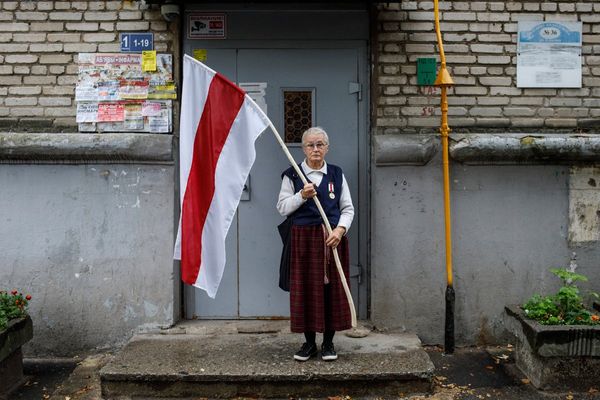
In 2009, Jonathon Young’s teenage daughter died with two of her cousins in a fire in a holiday cabin. Simply to write the words is to flinch from the awfulness of the event. Yet the actor and playwright has collaborated with choreographer Crystal Pite to create a two-hour piece of dance theatre, which addresses the experience of human suffering with raw and heroic brilliance.
Betroffenheit is a German word that evokes the physical and emotional stasis of shock, and while Young’s text moves far beyond the specifics of his own story, his role in the work is that of a man traumatised by some terrible accident. During the first half he’s locked inside a bare industrial room that is the hellhole of his grief and guilt, and here he is tormented by a play of (his own) recorded voices. There is the voice that urges him to relive the accident and find some saving epiphany from its tragedy, the one that urges him to leave the room and get on with his life, and the voices that urge him towards the numbing, addictive pleasure of drugs.
Young’s performance, choreographed by Pite, is searingly physical as he flips between a wracked, gaping state of nightmare to an ironic, unreal calm. The starkness of the lighting, the unrelenting sound score, the insistent rhythms of the voiceover all evoke the horror of a man trapped inside his head. That horror is exaggerated and alleviated by the five dancers who periodically gatecrash the room. As the salsa and tap-dancing demons of Young’s addiction, they are trashy, camp and sinister, and the macabre energy they bring to the stage perfectly portrays the seductiveness of the drug trip or the alcoholic binge.
In this raw and riveting drama of mental conflict, words and dance are expertly combined. But the second half of the work, in which Young exits the room for an open stage, is dominated by a section of pure dance whose imagery seems to stage the cathartic process of Young’s recuperation.
Pite’s special genius is in choreographing the body language of emotion in the distorted, lifting, folding shapes of her dancers’ bodies. In the sharply specific rhythms of trauma and comfort we can read whole narratives of suffering and recovery.
The dancers are astoundingly good – versatile and virtuosic – and the entire production is eerily surefooted in the handling of its darkly intractable material. The brilliance of this work lies in its refusal to offer any easy insights or promise of redemption. As Young returns centre-stage, one of the voices assures him that the accident is in the past and that there is nothing left for him in the room. But another reminds him that something precious does remain there – the dead – and that if he quits the room, he leaves them too. It is a quiet statement of fact and in its quietness lies the force of tragedy.







